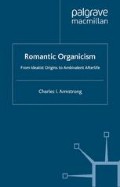Abstract
Modern hermeneutics has contributed a powerful meditation on how existence is embroiled in historicity and language. Hans-Georg Gadamer is widely recognised as one of its most accessible and influential proponents, in his attempt to surpass conceptually the fundamental limitations he believes to have been introduced by a dualistic, Cartesian world-view and the dominance of the mind-set of the natural sciences. The rationalistic isolation of the thinking subject has had disastrous consequences, Gadamer claims, and his grand opus Truth and Method represents a tripartite attack on its dominion. Not only in the fundamentals of philosophical ontology, which is the main provenance of Gadamer’s enquiry, but also within the theory of art and the methodology of the human sciences, this work attempts to provide a new and non-Cartesian footing. Inevitably, it has weighty ancestors — among other things, Gadamer is engaged in a continuation, albeit a transformative one, of romanticism. At the same time, he manifests considerable resistance to the romantic heritage, as is evident in his problematical relationship to figures such as G. W. F. Hegel, Friedrich Schleiermacher and Wilhelm Dilthey in particular.
Access this chapter
Tax calculation will be finalised at checkout
Purchases are for personal use only
Preview
Unable to display preview. Download preview PDF.
Notes
Martin Heidegger, Being and Time: A Translation of ‘Sein und Zeit ’ (translated by Joan Stambaugh, Albany: State University of New York Press, 1996).
Hans-Georg Gadamer, Truth and Method, revised edition (translated by Joel Weinsheimer and Donald G. Marshall, London: Sheed & Ward, 1996 [1989]).
Jacques Derrida has called ‘this properly in-finite movement of radical destruction’ that is beyond any conception of ‘finitude as limit’ (Archive Fever: A Freudian Impression [translated by Eric Prenowitz, Chicago: The University of Chicago Press, 1996], 94).
Hans-Georg Gadamer, ‘Rhetoric, Hermeneutics, and the Critique of Ideology: Metacritical Comments on Truth and Method’, translated by Jerry Dibble, 275, in Kurt Mueller-Vollmer (ed.), The Hermeneutics Reader: Texts of the German Tradition from the Enlightenment to the Present (New York: Continuum, 1994).
Wilhelm Dilthey, Die Geistige Welt: Einleitung in die Philosophie des Lebens. Erste Hälfte: Abhandlungen zur Grundlegung der Geisteswissenschaften, in Gesammelte Schriften, volume V (Stuttgart: B. G. Teubner Verlagsgesellschaft, 1957),
Walter Pater, Selected Writings of Walter Pater (edited by Harold Bloom, New York: Columbia University Press, 1974), 60.
Gadamer’s essay ‘Das Problem Diltheys: Zwischen Romantik und Positivismus’, in Gadamer, Neuere Philosophie II: Probleme, Gestalten, in Gesammelte Werke, volume 4 (Tübingen: J. C. B. Mohr (Paul Siebeck), 1987).
Heidegger, Über den Humanismus [Frankfurt am Main: Vittorio Klostermann, 1947], 21.
David Farrell Krell Daimon Life: Heidegger and Life-Philosophy [Bloomington: Indiana University Press, 1992], xi.
Georgia Warnke has noted Gadamer’s ‘oscillation’ in Gadamer: Hermeneutics, Tradition and Reason (Cambridge: Polity Press, 1987), 99.
Gadamer’s ‘Zur Fragwürdigkeit des ästhetischen Bewußtseins’, in Dieter Heinrich and Wolfgang Iser (eds.), Theorien der Kunst (Frankfurt am Main: Suhrkamp, 1992 [1982]).
A. Hilary Armstrong, Plotinian and Christian Studies (London: Variorum Reprints, 1979), 66.
Here Gadamer, (‘Hermeneutics and Logocentrism’, translated by Richard Palmer and Diane Michelfelder, 123, in Michelfelder and Palmer (eds.), Dialogue and Deconstruction: The Gadamer-Derrida Encounter [Albany: State University of New York Press. 1989]).
Gadamer, The Enigma of Health: The Art of Healing in a Scientific Age (translated by Jason Gaiger and Nicholas Walker, Cambridge: Polity Press, 1996), 139.
Hans-Georg Gadamer, The Relevance of the Beautiful and Other Essays (edited by Robert Bernasconi, translated by Nicholas Walker, Cambridge: Cambridge University Press, 1986), 42
Author information
Authors and Affiliations
Copyright information
© 2003 Charles I. Armstrong
About this chapter
Cite this chapter
Armstrong, C.I. (2003). The Connections of Significance: Gadamer and the Vitality of Understanding. In: Romantic Organicism. Palgrave Macmillan, London. https://doi.org/10.1057/9780230287754_8
Download citation
DOI: https://doi.org/10.1057/9780230287754_8
Publisher Name: Palgrave Macmillan, London
Print ISBN: 978-1-349-50951-5
Online ISBN: 978-0-230-28775-4
eBook Packages: Palgrave Literature & Performing Arts CollectionLiterature, Cultural and Media Studies (R0)

